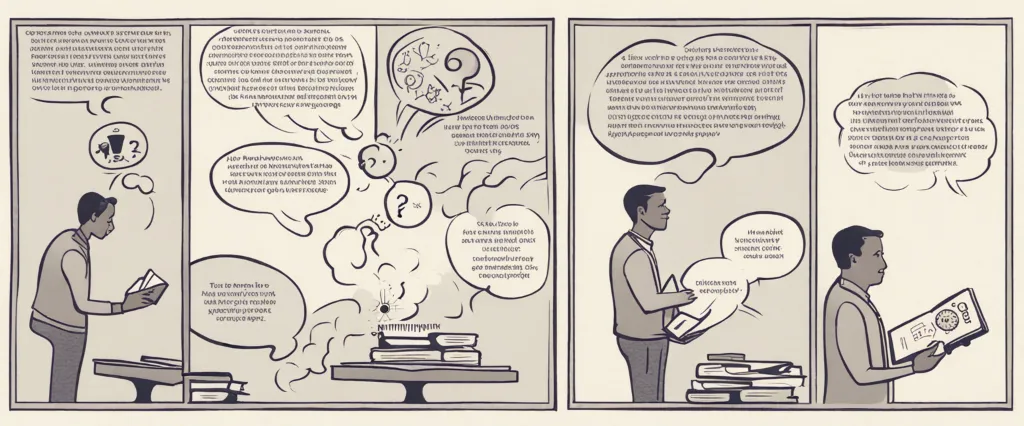Chapter 1:The Extraordinary Power of Ordinary: Recognizing the potential within
In Chapter 1 of “The Fred Factor” by Mark Sanborn titled “The Extraordinary Power of Ordinary: Recognizing the potential within,” the author introduces readers to the concept of going above and beyond in their everyday lives, just like a man named Fred.
Fred, a mailman in Sanborn’s neighborhood, stood out for his exceptional service and positive attitude. Sanborn describes how Fred would consistently go beyond the expectations of his job by delivering mail with a smile and a personal touch. Fred’s dedication and commitment to excellence not only made his customers’ day but also had a profound impact on Sanborn himself.
Through Fred’s example, Sanborn emphasizes that everyone has the potential to make a difference in the world, regardless of their occupation or status. He highlights the importance of recognizing the power within oneself and using it to make a positive impact on others. Sanborn coins the term “Fred” to refer to someone who goes the extra mile in their work or personal life to provide exceptional service and create meaningful connections.
By recognizing and tapping into their innate potential, he believes that individuals can transform ordinary moments into extraordinary ones. Sanborn encourages readers to adopt the Fred mindset and embrace four key principles: everyone is significant, everything is an experience, consistency creates value, and genuine relationships make a difference.
In conclusion, Chapter 1 of “The Fred Factor” introduces readers to the inspiring story of Fred, the extraordinary mailman, and sets the stage for exploring the profound impact of ordinary people who choose to unleash their potential and make a difference.
Chapter 2: Passion and Purpose: Finding meaning in your work
In Chapter 2 of “The Fred Factor” by Mark Sanborn, titled “Passion and Purpose: Finding Meaning in Your Work,” the author explores the significance of having a sense of purpose and passion in our work. Sanborn introduces the concept of “Herbie,” a character from “The Fred Factor” who embodies the lack of passion and purpose in his job as an analogy for individuals who feel unfulfilled and uninspired at work.
Sanborn emphasizes that finding meaning in one’s work requires a shift in mindset and attitude. He suggests that individuals should focus on how their work positively impacts others rather than solely focusing on tasks or financial rewards. By adopting a purpose-driven mindset, people are more likely to find fulfillment and perform at their best. Sanborn states that true fulfillment comes from making a difference and seeking to serve others in our daily interactions.
The author also highlights the importance of personal motivation and taking ownership of one’s work. He encourages readers to identify their individual passions and talents, leveraging them to contribute to their work environment positively. By aligning personal passions with work responsibilities, individuals can generate enthusiasm and bring their best selves to their jobs.
Furthermore, Sanborn emphasizes the need to cultivate an environment that encourages passion and purpose. Employers and leaders should create a workplace culture that allows people to feel valued, motivated, and empowered. Recognizing and appreciating the contributions of employees can foster a sense of belonging and satisfaction.
Overall, Chapter 2 of “The Fred Factor” emphasizes the significance of finding passion and purpose in our work. Through personal reflection, a shift in mindset, and an environment that values and encourages individuals’ contributions, people can transform their jobs into meaningful experiences.
Chapter 3: Delivering Value: Going above and beyond expectations
Chapter 3 of “The Fred Factor” by Mark Sanborn explores the concept of delivering value and going above and beyond expectations. The chapter emphasizes the importance of creating extraordinary experiences for customers, colleagues, friends, and family.
Sanborn introduces the concept of the “Value Principle,” which suggests that value is not determined solely by price or the product itself. Instead, value is created by the effort, attitude, and actions of an individual. Through numerous inspiring anecdotes and examples, the author illustrates how even ordinary people can become exceptional by consistently delivering value to others.
Sanborn highlights four essential elements that contribute to delivering value. First, he emphasizes the significance of building relationships based on trust and respect. By genuinely caring for others and showing empathy, individuals can significantly enhance the value they bring to their interactions. Second, he stresses the importance of understanding and meeting specific needs. By actively listening and observing, one can identify opportunities to exceed expectations. Third, Sanborn discusses the importance of constantly innovating and finding new ways to improve. Finally, he emphasizes the value of consistent effort and dedication, as true excellence often comes from sustained commitment.
The chapter also introduces the concept of the “Value Inventory,” where individuals reflect on their actions and identify areas for improvement. By regularly evaluating their performance and seeking feedback, individuals can continually refine their skills to consistently deliver value.
Overall, Chapter 3 of “The Fred Factor” inspires readers to strive for excellence by going above and beyond expectations, emphasizing the transformative power of delivering extraordinary value to others.
Chapter 4: Building Relationships: Connecting with others on a personal level

Chapter 4 of “The Fred Factor” by Mark Sanborn, titled “Building Relationships: Connecting with others on a personal level,” explores the importance of fostering genuine connections with others in order to create meaningful relationships and enhance personal and professional success.
Sanborn starts by emphasizing the significance of relational competence, asserting that relationships are at the heart of everything we do. He highlights that individuals who excel in building relationships possess certain qualities, including empathy, understanding, and authentic communication.
The author introduces the concept of the “Personal Gap,” which represents the difference between how we feel about ourselves and how others perceive us. Sanborn advises readers to bridge this gap by acknowledging and appreciating the unique qualities and perspectives of others. By doing so, they can create positive experiences and connections that make a lasting impression.
Sanborn shares practical strategies to connect with others, such as actively listening, being fully present, and looking for common ground. He accentuates the importance of genuine curiosity in others and the willingness to ask questions that deepen understanding and facilitate deeper connections.
Moreover, Sanborn emphasizes the power of kindness and going the extra mile to create exceptional experiences for others. He provides real-life examples of individuals, known as “Freds,” who have transformed ordinary encounters into extraordinary ones through their dedication, enthusiasm, and service-oriented mindset.
In conclusion, Chapter 4 of “The Fred Factor” emphasizes the importance of building relationships with others on a personal level. By understanding the Personal Gap, actively listening, showing genuine curiosity, and going the extra mile, individuals can create lasting connections and exceptional experiences that positively impact both their personal and professional lives.
Chapter 5: Creating Positive Experiences: Making every interaction memorable
Chapter 5 of “The Fred Factor” by Mark Sanborn focuses on the importance of creating positive and memorable experiences in every interaction. The chapter begins by stating that in order to become extraordinary in our daily lives, we must strive to be consistently exceptional in everything we do.
Sanborn introduces the concept of the “Value-Unique Experience” (VUE), which refers to the way people feel after interacting with us. He emphasizes the significance of leaving a lasting impression that surpasses customers’ expectations and encourages them to return and recommend our services to others. By providing a VUE, we create a positive connection that goes beyond the actual product or service.
The author then details three essential elements to creating a memorable experience. Firstly, the experience should be personal by tailoring it to the specific needs and preferences of the individual. Understanding customers’ preferences and adapting the interaction accordingly makes them feel valued and appreciated.
Secondly, the experience should be exceptional. Going above and beyond what is expected or required shows commitment and dedication to delivering a high-quality experience. Small gestures, attention to detail, and exceeding expectations contribute to making the interaction exceptional.
Lastly, the experience should be meaningful. To make the interaction memorable, it is important to understand the customer’s goals and desires. By aligning our actions with their aspirations, recognizing their individuality, and adding personal touches, we create a deeper emotional connection and leave a lasting impact.
Sanborn concludes the chapter by emphasizing the importance of consistency in creating positive experiences. By making every interaction memorable, whether it is with customers, colleagues, or strangers, we can stand out and make a difference in people’s lives.
Chapter 6: Taking Responsibility: Owning your actions and outcomes
Chapter 6 of “The Fred Factor” by Mark Sanborn focuses on the importance of taking responsibility for one’s actions and outcomes. Sanborn emphasizes that being a Fred, an exceptional individual who consistently goes above and beyond, requires taking ownership of one’s work and its impact.
The chapter begins by highlighting the common tendency for individuals to pass the blame or make excuses when things go wrong. Sanborn argues that this mindset prevents personal growth and hinders success. He explains that taking responsibility involves acknowledging mistakes, learning from them, and taking actions to rectify the situation. By doing this, one can ensure that mistakes do not happen again and that improvements are made.
Sanborn introduces the concept of “victimization” and emphasizes the importance of avoiding it. He advises readers to shift their focus from external circumstances to their own abilities and attitudes. Taking responsibility means recognizing that one has control over their actions and choices, regardless of external factors.
Throughout the chapter, Sanborn shares stories and examples of individuals who have taken responsibility for their actions and achieved remarkable results. He highlights that being accountable sets individuals apart and earns them respect and trust from others.
Furthermore, Sanborn explains that taking responsibility not only impacts individuals personally but also inspires and influences those around them. By demonstrating accountability, individuals encourage others to do the same, creating a culture of responsibility and ownership.
In summary, Chapter 6 of “The Fred Factor” emphasizes the significance of taking responsibility for one’s actions and outcomes. Sanborn encourages individuals to avoid blaming others and instead focus on learning from mistakes, taking ownership of their work, and inspiring others to do the same. By doing so, individuals can become exceptional and make a positive impact in their personal and professional lives.
Chapter 7: Continuous Improvement: Striving for excellence and growth
Chapter 7 of “The Fred Factor” by Mark Sanborn focuses on the concept of continuous improvement and how individuals can strive for excellence and growth in their personal and professional lives.
Sanborn begins the chapter by emphasizing that continuous improvement is a mindset and a choice that sets individuals apart from others. He asserts that the pursuit of excellence is a never-ending journey, and those who commit to continuous improvement are dedicated to constantly learning and growing.
The author introduces the concept of “stretch goals,” which are ambitious targets that push individuals out of their comfort zones and challenge them to achieve more than they initially believed possible. By setting stretch goals, people can tap into their full potential and continuously improve upon their skills and abilities.
Furthermore, Sanborn emphasizes the importance of seeking feedback from others in order to grow and improve. He suggests that feedback should not be seen as criticism but rather as an opportunity for growth and development. By incorporating feedback and making necessary adjustments, individuals can elevate their performance and achieve excellence in their fields.
Sanborn also highlights the significance of embracing failure as a learning opportunity. He believes that mistakes are inevitable, but what matters is how individuals learn from them and use them as stepping stones for improvement. By adopting a growth mindset, individuals can turn setbacks into valuable lessons and continuously improve their performance.
In conclusion, Chapter 7 of “The Fred Factor” emphasizes the significance of continuous improvement in personal and professional lives. By setting stretch goals, seeking feedback, embracing failure, and committing to lifelong learning, individuals can strive for excellence, achieve growth, and elevate their performance to new heights.

Chapter 8: Leaving a Lasting Legacy: Making a lasting impact on others
Chapter 8 of The Fred Factor by Mark Sanborn, titled “Leaving a Lasting Legacy: Making a lasting impact on others,” explores the importance of creating a legacy through impactful actions and positive influence on people’s lives.
The chapter begins by emphasizing that leaving a lasting legacy is not limited to famous or influential individuals. Instead, anyone can make a significant impact on others by adopting the Fred mindset and consistently going above and beyond in their interactions. Sanborn highlights the story of Bob, a mail carrier who became a legend in his community due to his exceptional service and care for people.
The author presents three principles for leaving a lasting legacy. The first is to be genuine in one’s actions, as people can sense insincerity. Genuine acts of kindness and extraordinary service create memories that are cherished and passed on. The second principle is to be positive, maintaining an optimistic attitude even in challenging situations. Positivity can inspire and uplift others, leaving a lasting imprint. Lastly, Sanborn emphasizes the importance of creating value for others. By going beyond one’s job description and finding ways to improve someone’s day, individuals can have a profound impact on the lives of others.
Sanborn goes on to discuss the significance of role models and the transformative power of mentoring. By investing time and effort into mentoring others, individuals can pass on knowledge and skills to the next generation, creating a lasting legacy.
In conclusion, Chapter 8 of The Fred Factor reminds readers that leaving a lasting legacy is not only reserved for the few but is achievable by each person who consciously chooses to make a positive impact on others. By being genuine, positive, and creating value for others, individuals can leave a remarkable legacy that continues to inspire and uplift long after they are gone.
After Reading
In conclusion, “The Fred Factor” by Mark Sanborn showcases the extraordinary power of going above and beyond in everyday situations. Through the inspiring story of Fred, a remarkable mail carrier, Sanborn emphasizes the importance of bringing passion, creativity, and excellence to our work and personal lives. By adopting the Fred mindset, we can enhance relationships, create memorable experiences, and make a positive impact on the world around us. Sanborn’s practical tips and heartfelt examples serve as a reminder that we all have the ability to transform ordinary moments into extraordinary opportunities for growth and success. Overall, “The Fred Factor” serves as a powerful reminder that the simplest actions can have a profound and lasting impact on our lives and the lives of others.
1. “The Go-Giver: A Little Story About a Powerful Business Idea” by Bob Burg and John David Mann – This book explores the power of giving and the importance of building relationships in both personal and professional settings.
2. Leaders Eat Last: Why Some Teams Pull Together and Others Don’t” by Simon Sinek – Sinek examines the qualities of great leaders and their ability to create environments in which people feel valued and motivated to contribute their best.
3.”The Energy Bus” by Jon Gordon provides 10 practical rules to infuse positivity into your life, work, and team. It’s an inspiring journey that teaches the power of positive energy and its impact on personal and professional success. A must-read for those seeking to create a positive and thriving environment.
4.”The Energy Bus” by Jon Gordon provides 10 practical rules to infuse positivity into your life, work, and team. It’s an inspiring journey that teaches the power of positive energy and its impact on personal and professional success. A must-read for those seeking to create a positive and thriving environment.
5. “Good to Great: Why Some Companies Make the Leap… and Others Don’t” by Jim Collins – Collins examines companies that have gone from being average to exceptional, highlighting the factors that differentiate them and the importance of having the right people on board.




